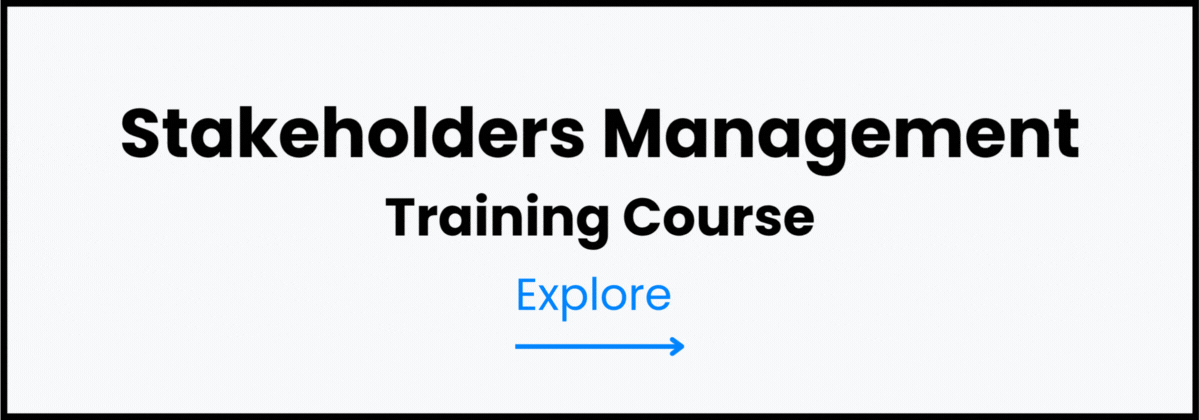Benefits of Stakeholder Mapping for Project Success
Stakeholder mapping is the process of identifying, analyzing, and prioritizing the individuals, groups, and organizations that influence or are influenced by a project. More than a preliminary planning activity, stakeholder mapping serves as a strategic management tool that enables project teams to understand power dynamics, align expectations, and design effective communication strategies.
In every project, success depends on how well stakeholders are engaged, informed, and motivated to support shared objectives. By visualizing relationships and levels of influence, stakeholder mapping helps project leaders recognize key decision-makers, anticipate potential risks, and manage competing interests. It ensures that no critical voices are overlooked while providing a structured framework for transparency, trust, and collaboration.
Beyond identification, stakeholder mapping enhances strategic communication, helps allocate resources efficiently, and promotes informed decision-making throughout the project lifecycle. When done correctly, it bridges gaps between leadership and operational teams, enabling smoother coordination and stronger buy-in from all parties involved.
This article explores the key benefits of stakeholder mapping, its vital role in achieving project success, and how it empowers teams to manage relationships more effectively. Let’s explore how stakeholder mapping drives project alignment, engagement, and long-term success.
What Is Stakeholder Mapping?
Stakeholder mapping is a structured process within the project management lifecycle that involves identifying, analyzing, and prioritizing all individuals or groups who have an interest in or influence over a project’s outcomes. It provides a visual representation of relationships, influence levels, and engagement priorities, allowing project leaders to understand who the key players are and how best to manage their expectations.
Tools such as the Power–Interest Grid or Stakeholder Matrix are commonly used to categorize stakeholders based on their level of authority and interest. These visual tools help teams determine which stakeholders need close management, who should be kept satisfied, and who simply requires periodic updates.
The primary goal of stakeholder mapping is to ensure that every stakeholder receives the right level of communication and involvement — avoiding both neglect and information overload. When effectively applied, it supports targeted engagement, clearer decision-making, and improved collaboration across all stages of a project.
Why Stakeholder Mapping Is Critical for Project Success
Projects achieve success not only through strong technical execution but also through effective people alignment. No matter how well-designed a project plan is, its success ultimately depends on how well stakeholders understand, support, and contribute to its objectives. This is where stakeholder mapping plays a vital role — turning complex human dynamics into a manageable framework for collaboration and communication.
Through stakeholder mapping, project teams can:
- Identify potential risks and allies early: Recognizing who holds influence — and how they might impact project outcomes — enables teams to anticipate challenges and build support where it matters most.
- Align project goals with stakeholder priorities: Understanding different interests ensures that project objectives reflect shared expectations, minimizing resistance and misunderstandings.
- Build engagement and trust proactively: Targeted communication and inclusion foster confidence, helping stakeholders feel valued and invested in project success.
In essence, stakeholder mapping shifts stakeholder management from reactive problem-solving to proactive relationship-building. Instead of responding to conflicts or misalignment after they occur, teams can use the map as a strategic guide to engage the right people at the right time — ensuring alignment, commitment, and sustained project momentum. View: Stakeholders Management Training Course
Key Benefits of Stakeholder Mapping
Effective stakeholder mapping delivers measurable benefits that go far beyond identifying names and roles. It serves as a dynamic management tool that enhances communication, fosters collaboration, and strengthens decision-making throughout the entire project lifecycle. Below are the most significant advantages that demonstrate why stakeholder mapping is indispensable for achieving project success.
-
Improves Communication and Information Flow
A well-structured stakeholder map reveals who needs to know what and how best to communicate with them. By visualizing relationships and communication needs:
- Project teams can deliver tailored, relevant information to the right audiences.
- It prevents duplication or information gaps, ensuring consistency across departments.
- Stakeholder mapping helps develop targeted messaging and regular updates, promoting alignment and reducing misunderstandings.
Clear communication supported by mapping builds transparency and keeps everyone informed — from executives to operational teams.
-
Enhances Decision-Making and Strategic Alignment
Stakeholder mapping gives leaders clarity on who holds influence and whose input is critical for approvals, funding, or key decisions.
- It highlights stakeholders who must be involved in strategic discussions.
- Encourages diverse perspectives, helping teams make informed and balanced decisions.
- Promotes alignment between project outcomes and organizational objectives, ensuring all efforts support the bigger vision.
By integrating stakeholder insights into every stage, projects become more strategic, collaborative, and goal-oriented.
-
Builds Trust and Stronger Relationships
One of the most powerful benefits of stakeholder mapping is its role in building and sustaining trust.
- Understanding each stakeholder’s expectations enables transparent, two-way dialogue.
- It supports rebuilding trust with dissatisfied stakeholders, showing that concerns are acknowledged and addressed constructively.
- Demonstrating inclusivity and respect for varying viewpoints strengthens long-term relationships and stakeholder buy-in.
Trust built through openness and engagement becomes the foundation for smoother collaboration and shared success.
-
Identifies and Mitigates Risks Early
Stakeholder mapping acts as an early warning system for potential risks or conflicts.
- It helps identify sources of resistance or misalignment before they escalate.
- Risk management plans can incorporate stakeholder-related risks, such as opposition, disengagement, or delayed approvals.
- Promotes collaboration between project managers and risk officers to mitigate issues effectively.
By addressing stakeholder risks proactively, teams can prevent costly delays and maintain steady progress.
-
Improves Resource Allocation and Prioritization
Mapping influence and interest ensures that resources are invested where they have the greatest impact.
- Enables teams to focus time and effort on high-priority stakeholders who drive outcomes.
- Reduces wasted effort on low-impact relationships or unnecessary communication.
- Enhances efficiency in engagement planning, helping leaders allocate staff and budget more strategically.
Smart prioritization leads to better results with fewer resources — a hallmark of effective project management.
-
Supports Effective Change Management
During organizational transitions or project adjustments, stakeholder maps identify who will be most affected by change.
- Allows teams to tailor communication strategies to specific concerns and influence levels.
- Helps manage resistance by engaging affected stakeholders early and consistently.
- Maintains morale by ensuring individuals feel informed and included in the process.
By integrating stakeholder mapping into change management, leaders can foster smoother transitions and maintain strong support throughout the transformation.
-
Enables Continuous Monitoring and Feedback
Stakeholder mapping is not a one-time exercise — it’s a living framework that evolves as projects progress.
- Regularly updating the map ensures accuracy as priorities, influence, and relationships shift.
- Enables teams to monitor stakeholder engagement effectiveness through measurable feedback loops.
- Provides valuable insight for continuous improvement and future planning.
By maintaining an adaptive approach, organizations ensure ongoing alignment, stronger relationships, and sustainable project success. ➡️Managing Project Stakeholder Relationships Course
How Stakeholder Mapping Contributes to Project Success
The connection between stakeholder mapping and project success lies in its ability to align people, priorities, and processes. By transforming complex stakeholder networks into clear, actionable insights, mapping supports the core elements that determine whether a project meets its goals on time and within budget.
- Scope Management:
A clear understanding of stakeholder priorities prevents scope creep — one of the most common causes of project failure. When teams know who influences scope decisions and what each party values, they can set realistic boundaries and maintain focus on agreed deliverables. - Risk Reduction:
Stakeholder mapping helps anticipate people-related risks such as resistance, disengagement, or conflicting interests. By identifying potential points of friction early, teams can design communication and engagement strategies that reduce uncertainty and maintain cooperation. - Engagement Quality:
Projects thrive on participation and support. Stakeholder mapping boosts engagement quality by ensuring the right people are informed, consulted, or involved at the right stages. This targeted interaction increases stakeholder satisfaction and trust. - Time and Cost Efficiency:
Miscommunication and unaddressed conflicts often lead to costly delays. Mapping streamlines communication flow and clarifies responsibilities, helping teams resolve issues faster and avoid time or budget overruns.
Example:
In a public infrastructure project, stakeholder mapping identified local community leaders as high-interest participants. By engaging them early, project managers addressed environmental and social concerns before formal reviews began. This proactive engagement prevented community opposition and saved several months in approval delays — demonstrating how effective stakeholder mapping directly contributes to smoother execution and measurable project success. ➡️Managing Project Stakeholders Course
Best Practices for Effective Stakeholder Mapping
To maximize the value of stakeholder mapping, organizations must treat it as both a strategic analysis and a human-centered process. The following best practices ensure that mapping remains accurate, actionable, and aligned with evolving project realities.
- Update maps regularly: Stakeholder priorities, influence, and interests change over time. Review and refresh your stakeholder map periodically — especially after major project milestones or organizational shifts — to maintain relevance and accuracy.
- Involve cross-functional team members: Include perspectives from various departments such as project management, communications, operations, and finance. A multidisciplinary approach provides a more holistic understanding of stakeholder dynamics.
- Blend quantitative and qualitative insights: Use data-driven metrics (such as engagement frequency or feedback scores) alongside relational insights gained from direct interactions. This combination ensures decisions reflect both measurable influence and interpersonal nuances.
- Prioritize visual clarity: Design maps that are simple, intuitive, and easy to interpret. Tools like Power–Interest Grids, Stakeholder Dashboards, or influence charts help leadership teams visualize relationships quickly and make informed decisions.
- Validate assumptions directly: Don’t rely solely on internal perceptions. Confirm your assessments through open discussions with stakeholders to ensure the map reflects their actual influence, interest, and expectations.
Ultimately, stakeholder mapping is both an analytical and human process. The most effective maps go beyond static data — they evolve through ongoing dialogue, empathy, and understanding, ensuring alignment between organizational goals and stakeholder engagement at every stage.
Explore Courses From Our Top Categories:
➡️Business Training Courses – ➡️ Data Training Courses – ➡️ Technical Training Courses – ➡️ HSSE Training Courses
FAQs
-
What are the main benefits of stakeholder mapping in project management?
The main benefits of stakeholder mapping in project management include improved communication, clearer prioritization, stronger trust, and early risk detection. It helps project teams identify key influencers, align goals with stakeholder interests, and ensure consistent engagement throughout the project lifecycle.
-
How does stakeholder mapping contribute to project success?
Stakeholder mapping contributes to project success by aligning people, processes, and objectives. It prevents miscommunication, anticipates potential conflicts, and ensures that decision-makers and affected groups are engaged at the right time. This proactive approach enhances efficiency, reduces delays, and boosts stakeholder satisfaction.
-
What tools are used for stakeholder mapping?
Common stakeholder mapping tools include the Power–Interest Grid, Stakeholder Matrix, and digital visualization platforms like Miro, Lucidchart, or Microsoft Visio. These tools help categorize stakeholders by influence and interest levels, making it easier to plan targeted communication strategies.
-
How often should stakeholder maps be updated?
Stakeholder maps should be updated regularly—especially after key milestones, organizational changes, or major project decisions. Continuous updates ensure that the map reflects current priorities, relationships, and influence levels, allowing teams to respond to evolving expectations effectively.
-
How can stakeholder mapping help manage project risks?
Stakeholder mapping helps manage project risks by identifying individuals or groups who might cause delays, resist changes, or impact outcomes. Early identification allows project managers to design communication and engagement plans that minimize resistance, clarify responsibilities, and foster collaboration.
-
What’s the difference between stakeholder mapping and stakeholder analysis?
While stakeholder analysis focuses on evaluating stakeholder influence, interest, and impact, stakeholder mapping visually represents these relationships. Mapping is the visualization stage that helps teams see where stakeholders stand, making analysis results actionable and easier to communicate.
-
How can stakeholder mapping improve communication in projects?
Stakeholder mapping improves communication by defining who needs specific information, how frequently updates should be shared, and which channels are most effective. It ensures that communication is targeted, relevant, and consistent, reducing confusion and fostering stronger alignment.
-
Is stakeholder mapping useful for Agile project teams?
Yes, stakeholder mapping is highly valuable for Agile teams. Agile projects rely on iterative feedback and continuous collaboration, and mapping helps identify high-impact stakeholders who must be engaged throughout sprints. It ensures timely communication, faster decision-making, and smoother adaptation to change.
➡️ Explore: Human Resources Training Courses – Strategic Management Training Courses – Management and Leadership Training Courses – Governance & Compliance Training Courses





